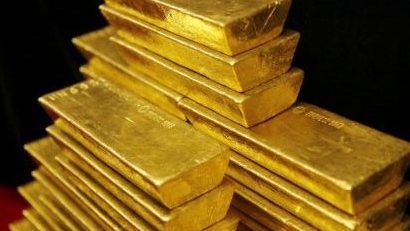Bullion fans are looking at the recent pullback in the price of gold and wondering which names might be attractive for long-term bets.
Let’s take a look at Kinross Gold Corporation (TSX:K)(NYSE:KGC) and the current state of the gold market to see if the miner deserves to be in your portfolio.
Recovery
Kinross is finally on the mend after a multi-year rout that nearly killed the company.
How bad has it been?
Kinross traded for more than $20 per share in 2009. The stock bottomed out at $2 in 2015 and is currently $5.40 per share.
Most of the pain began back in 2010 when Kinross paid US$7 billion to acquire Red Back Mining.
The deal is widely viewed as one of the worst in the sector, and Kinross was forced to write down a large part of the acquisition in the following years as gold prices plunged and the assets failed to live up to expectations.
The new management team that came in did a good job of cleaning up the balance sheet, and Kinross is once again investing in growth projects.
Tasiast turnaround
The Tasiast mine in Mauritania was supposed to be the crown jewel in the Red Back deal, but the site hasn’t performed as promised.
That situation is about to change.
Kinross is investing US$300 million in the first phase of an expansion at Tasiast that should boost production by 90% and significantly reduce all-in sustaining costs.
A second phase is under consideration with a decision expected by the end of 2017.
If phase two goes ahead, Tasiast would become the top-producing mine for Kinross with annual production of about 1.2 million ounces.
Gold outlook
Gold took a run at US$1,300 per ounce early this month, but has since pulled back to US$1,250.
Geopolitical fears had pushed investors into safe-haven assets through the month of May. Gold also got a boost from reduced expectations of rate hikes in the United States after weaker-than-expected jobs data sent pundits back to the drawing board.
Why has gold reversed?
The French elections went better than expected (in the eyes of the markets), and the fallout from the surprise results in the U.K. election hasn’t been as bad as anticipated.
In addition, the U.S. Federal Reserve raised its target rate for the second time this year, and analysts are back on the rate-hike bandwagon.
Higher rates tend to be negative for gold, as they normally push up the value of the U.S. dollar, in which the yellow metal is priced. This makes it more expensive for holders of other currencies to buy gold.
Higher interest rates also increase the opportunity cost of holding non-yielding assets such as gold.
Should you buy Kinross?
Gold looks like it will remain stuck in a tight trading range, unless a significant economic or geopolitical event triggers a major rush to safe-haven assets.
As such, you have to be on the bull side of the debate to own any gold miners today.
If you fall in that camp, Kinross is worth considering for your portfolio. The company has turned the corner in its recovery plan, and the market is just starting to realize the long-term potential of the assets, including Tasiast.







